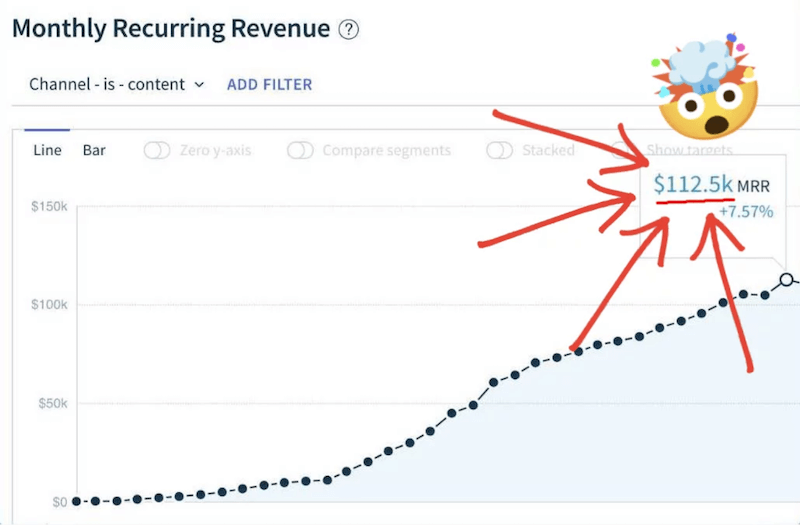What is AI generated content?
AI-generated content is the creative output crafted by artificial intelligence. It's the product of digital artists or writers, who can produce text, images, videos, or even music, based on specific inputs and guidelines. Ever wanted to read a Shakespearean play about space hamsters? AI might just make it happen! This innovative approach to content creation allows for unique and efficient results — it's the magic of technology bringing your wildest ideas to life.
AI generated content fast facts
AI's role in content creation is quickly expanding, with over half of business leaders integrating it into their strategies.
GPT models like the ones from OpenAI showcase AI’s ability to generate text that's remarkably human-like.
Human creativity and emotional intelligence remain irreplaceable in the AI-assisted content creation process.
The copyright debate around AI-generated content is ongoing, reflecting complex legal and ethical questions.
Tools like Copy.ai and Writesonic provide free plans to generate content using ready-made templates for different uses.

A robot sits at a desk, typing on a laptop, a creative portrayal of AI's role in content creation. Photograph: Nabeel Ahmed via LinkedIn.
Can I use AI to write content?
Absolutely, you can use AI to write content. It's a powerful tool for creating any type of content like blog posts, social media updates, or even entire books. With web search features integrated within tools like ChatGPT and Google Bard, you can even create research articles using AI.
But, don't forget the human touch. AI is great for getting the bones of your content down, but your personal insights and style are what make it truly connect with your audience. Balancing AI's efficiency with your unique perspective is key to creating content that's both smart and authentic.
What is the main purpose of ChatGPT?
The main purpose of ChatGPT is to serve as an interactive language model that assists users in a wide range of tasks. It's designed to understand and generate human-like text, and it generates text based on the input it receives. This capability makes it incredibly versatile, being used for pretty much everything — from answering questions to helping with content creation, offering educational support, or even engaging in casual conversation similar to what you can have with humans.
ChatGPT is particularly impressive for its ability to provide contextually relevant responses. Whether it's about current events, technical topics, or everyday queries, it delivers accurate and helpful information that is in context.
ChatGPT's design, which is focused on usability, plays a big role in its popularity. It's user-friendly to the point where anyone who's ever exchanged texts can quickly get the hang of it. You don't need to be a developer or have any tech background to start using ChatGPT — it's that straightforward.

A user easily accessing ChatGPT on a mobile device, showcasing the accessibility of AI generated content in everyday technology. Photograph: Kathy Hirsh-Pasek and Elias Blinkoff via Brookings.
Will AI replace content creators?
AI entirely replacing content creators is an unlikely event, as the relationship between AI and human creativity is more complementary than competitive. AI excels in handling large volumes of data, generating ideas quickly, and assisting with time-consuming tasks like drafting and research. This efficiency is a boon for content creators, who can then focus more on the creative and strategic aspects of content production.
The nuances of human experience, emotion, and cultural context are areas where AI still falls short. Content creators bring a depth of understanding and emotional intelligence to their work, which are critical elements for truly engaging and resonating with audiences. This human touch, essential in storytelling and brand communication, can't be fully replicated by AI.
Moreover, the evolution of AI in content creation demands a new skill set from creators, like overseeing AI-generated content and integrating AI tools into their workflow. The future likely holds a collaborative scenario, where AI and human creativity work in tandem, each amplifying the strengths of the other. So, rather than replacing content creators, AI is set to become a valuable ally in the creative process.
How much online content is AI generated?
As of now, AI's role in content creation is significant and continues to grow. More than half of business leaders are already using AI content generation tools in their content marketing strategies, and the trend is on the rise. Almost 65% are using AI for content creation, displaying the shift towards AI in various industries.
Looking into the near future, the extent of AI-generated content online is projected to increase dramatically. Experts predict that around 90% of all online content could be AI-generated by 2025. This surge reflects the advancements in AI capabilities and its wider adoption across various sectors, highlighting a shift towards more AI-driven content production.
Going further, the long-term projections are even more striking. By 2030, it's estimated that potentially 99%+ of all online content could be produced by AI. This anticipated growth is tied to the continuous development of sophisticated AI models. These figures underscore a significant trend: AI is not just supplementing but increasingly dominating the content creation field.

An illustration of a robot checking off tasks, symbolizing the efficiency and multitasking abilities of AI in content generation and management. Photograph: SE Ranking via Search Engine Journal.
What is the difference between AI content and human content?
The difference between AI-generated content and human-created content lies primarily in the nuances of creativity, context, and emotional intelligence.
AI content, generated by tools like language models, excels in efficiency and data processing. It can quickly produce large volumes of text, analyze and incorporate SEO strategies, and handle repetitive tasks with ease. AI is also great for generating structured content like reports or basic articles, where the primary requirement is summarizing information or data. However, AI-generated content can sometimes lack the depth and subtlety that comes from human experience and cultural context. It tends to be more formulaic and might miss the nuanced understanding of complex topics or sensitive issues.
On the other hand, human-created content often stands out for its originality and emotional depth. Humans bring personal experiences, emotions, and cultural understanding to their writing, which can make content more engaging, relatable, and persuasive. Human writers can understand and play with subtleties of language, irony, humor, and stylistic elements in ways that AI currently can't replicate. They are also better at understanding complex, ambiguous, or highly specialized topics and tailoring content to specific audiences with a certain tone or style.
Is AI generated content copyrighted?
Copyright issues surrounding AI-generated content are complex and evolving. Generally, copyright law protects original works of authorship, traditionally created by humans. When it comes to AI-generated content, there's an ongoing debate about whether and how these laws apply.
AI-generated content, created without direct human authorship, falls into a gray area in copyright law. The main question is about authorship: since AI is a tool and not a legal person, it can't hold copyrights. This raises questions about who, if anyone, owns the copyright to content created by AI. Is it the user who prompted the AI, the developers of the AI, or is the content considered public domain?
Currently, there's no clear, universally accepted legal standard for this. Some argue that AI-generated content should be treated similarly to works created using other tools, like a camera or a paintbrush, where the user of the tool (in this case, the person interacting with the AI) holds the copyright. Others suggest that because AI creates content based on its training, which includes existing copyrighted works, this complicates the matter further.
In practice, many users and companies treat AI-generated content as if it's copyrighted by the entity that generated it, using it under licenses or terms of service provided by the AI tool. However, the legal landscape is still shifting, and different countries may have varying approaches to this issue. For definitive legal advice, especially for commercial use, consulting a legal expert in your country is necessary.
How much AI content is acceptable?
The acceptability of AI-generated content, especially in terms of search engines like Google, revolves around quality and user-focus. Google's guidelines on AI-generated content emphasize the E-E-A-T principle (Expertise, Experience, Authoritativeness, Trustworthiness) for both AI and human-created content. The focus is on producing high-quality, valuable content for users, not just for search engine algorithms.
AI-generated content is acceptable as long as it adds value, maintains originality, and aligns with user intent. Google acknowledges that AI can create helpful content, like sports scores or weather forecasts, but warns against content that manipulates search rankings, which would violate their spam policies. They recommend content creators focus on three aspects of content creation: the "Who, How, and Why".
Overall, AI content that is reliable, helpful, and people-first aligns with Google's guidelines. Both AI and human-generated content are subject to the same standards of quality and reliability, especially for sensitive topics like health, research, or finance.

A person smiling as they work with AI-generated content on their laptop, illustrating the growing collaboration between humans and AI. Photograph: Elyse Dunbar via Optimizely.
How can you tell if content is AI-generated?
Detecting AI-generated text involves looking for certain patterns and characteristics. One method researchers use is analyzing text features like fluency, word frequency, punctuation, and sentence length. For instance, AI-generated text often overuses common words like "the," "it," or "is," as these models predict the next word in a sentence based on likelihood.
Human-written text, on the other hand, tends to be more variable and less perfect, often including typos, different styles, and slang. AI language models rarely make typos, so the presence of errors can be an indicator of human writing.
Large language models like Copyleaks’ AI Content Detector can also be used to detect AI-generated text. Such models are trained on texts written by humans and by machines, teaching them to differentiate between the two. However, these detection methods have limitations. They are less effective against the latest AI models and require large amounts of text to analyze. They are also less efficient in cases like chatbots or email assistants, which involve shorter texts.What are the cons of AI-generated content?
AI-generated content, while efficient and increasingly sophisticated, comes with its own set of cons:
- Plagiarism: AI-generated content often pulls from existing data sources without providing citations. This can lead to plagiarism issues, especially if the AI's output closely resembles the original work it's based on. The risk of legal repercussions for copyright infringement is a significant concern for those relying heavily on AI for content creation.
- SEO limitations: Google's evaluation criteria, such as E-E-A-T (Experience, Expertise, Authoritativeness, Trustworthiness), play a crucial role in how content is ranked. AI-generated content may fall short in these areas, especially if it lacks the human experience and subject understanding that contribute to quality and reliability. As a result, AI-only content might not meet Google's standards, which could lead to potential devaluation in search rankings.
- Limited emotional and language understanding: AI struggles with the nuances of language and emotional expression. It can provide factual information but lacks the ability to comprehend and convey the subtleties of human emotions, humor, sarcasm, metaphors, and idioms.
Is there a free AI content generator?
ChatGPT, developed by OpenAI, is a prime example of advanced AI content generators. It's known for its ability to produce human-like text across a wide array of topics at a level of quality no other tool can top.
Tools like Copy.ai and Writesonic also stand out with their focus on user-friendly interfaces, copywriting templates, and SEO optimization. For long-form content, Article Forge excels in generating high-quality articles quickly, ideal for in-depth content creation for your blog or research papers.

